Discussion on the history of American whiskey legislation, esp. its taxation.

Section of Distilled Spirits Tax Revision Act from 1979 that repealed the fifth requirement for bottling in bond (26 USC 5233)
In addition to having spirits that complied with the 'four rules of bottled-in-bond' a distillery also needed a dedicated bottling facility to actually take advantage of the new standard. It stood this way until 1979 when a set of sweeping reforms removed this requirement as well as generally simplifying how taxes on spirits were assessed.
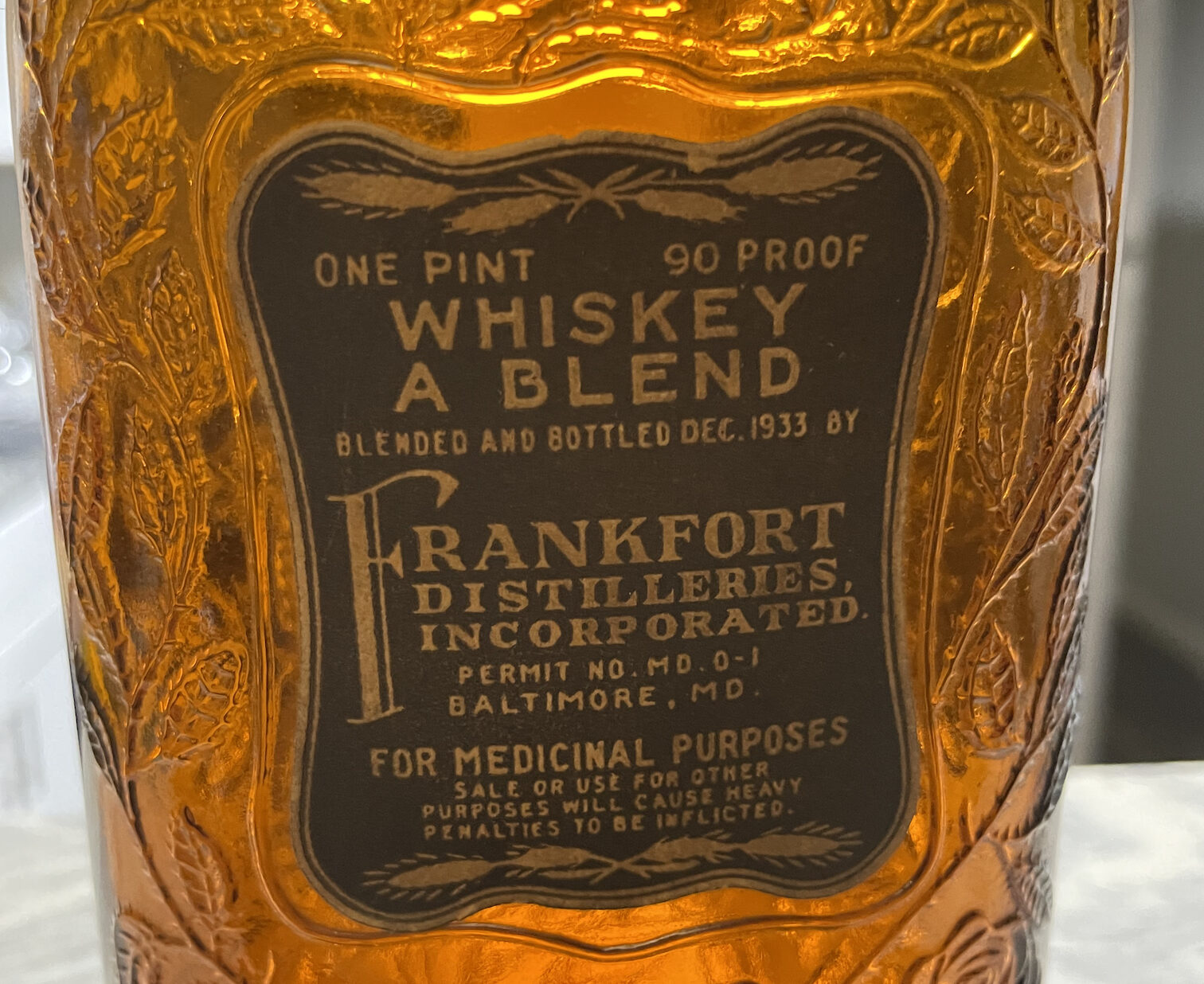
Bottled in December 1933 this whiskey qualified as neither a bottled-in-bond (a standard from before Prohibition) nor as a straight (a standard which didn’t yet exist).
Easily achieved today, aging for two years was a new standard in 1936, but why? An investigation into what into befell whiskey production in the run up to and during the second world war added some missing perspective that helped answer this question.

The requirement that Bourbon and rye could only be aged in charred new oak containers was added at some point between 1935 and 1938. No one really knows why it was added or by whom.
Between 1935 and 1938 one very significant substantive change was made to the nascent standard of identify for Bourbon and rye whiskey (among others): the requirement for aging in new charred oak barrels. The difference is less than a sentence. No one really knows how it came to be added.
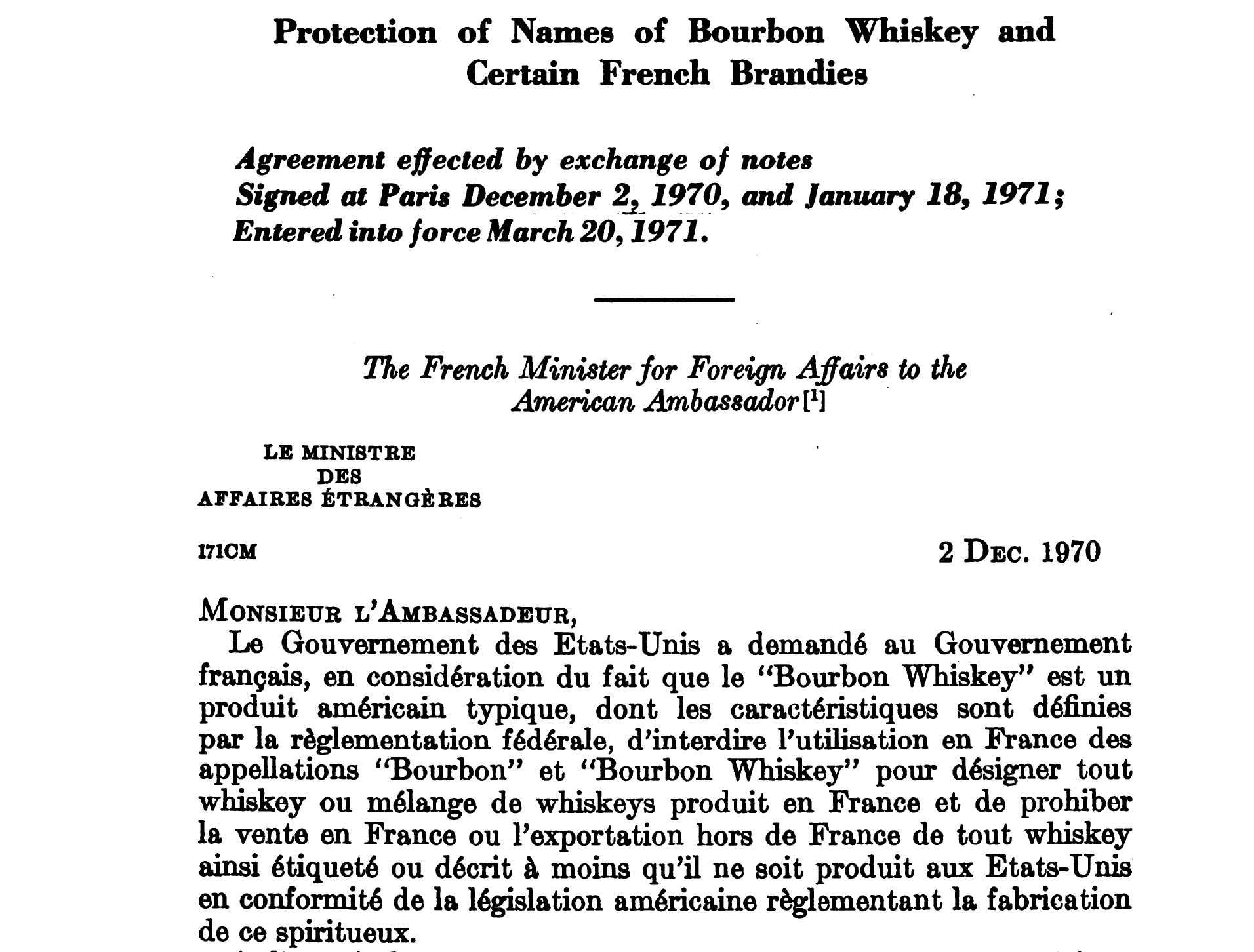
This treaty in 1971 provided the first protection for the name 'Bourbon' with another country.
In 1971 the United States and France entered into a trade agreement titled "Protection of names of Bourbon whiskey and certain French brandies." By signing it, the French government agreed that Bourbon was a distinctive product of the United States and further that it can only be made there and in accordance with its defined standard of identity. This was the first of many international agreements based on Concurrent Resolution 64.
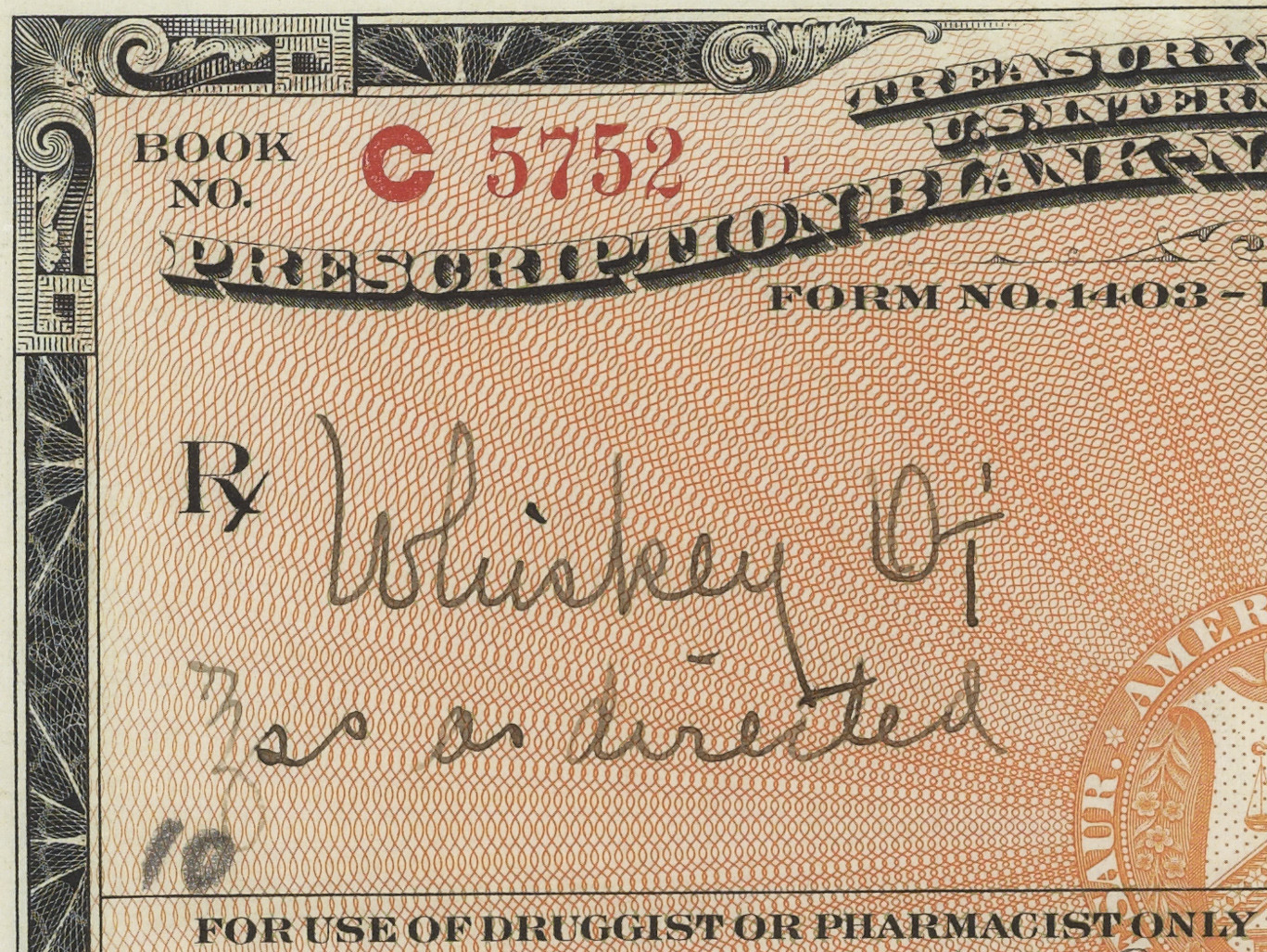
Close up of a medicinal spirits prescription showing details as elaborate as a dollar bill, probably intended to prevent counterfeiting. Apparently this wasn't enough of deterrent. But that wasn't going to matter much longer.
In May of 1933 the federal government issued one final set of regulations regarding prescriptions written for medicinal whiskey, reflecting an act passed just two months earlier. But the 21st amendment was already in the process of being ratified and by the end of the year national Prohibition would be repealed. These regulations appear to have been its last gasp.

The feds had this 119 page manual which outlined rules related to anything having to do with 'intoxicating liquor' during prohibition, including medicinal whiskey, all ready to go as soon as Prohibition started.
In 1916 Spiritus Frumenti (AKA whiskey) was removed from the United States Pharmacopoeia (U.S.P.) ending its official status as a medicine. And then four years later, just as national Prohibition is given the force of law, an odd thing happens: whiskey gains status as a medicine once again. What was the deal with that?
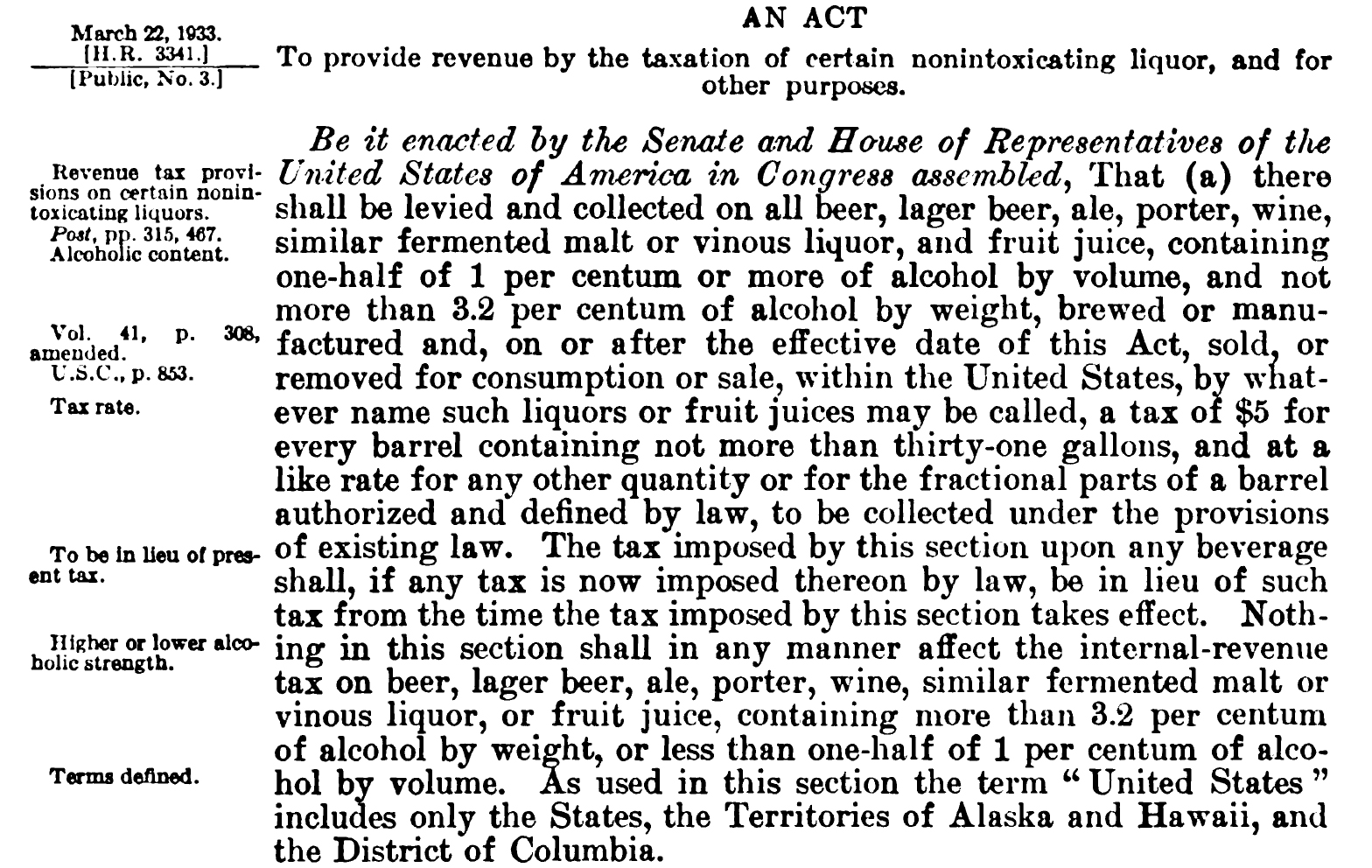
The Harrison-Cullen Act levied a federal tax on low proof alcoholic beverages like beer and wine. This was several months before the 21st amendment was ratified. Obviously the feds saw the writing on the wall.
Today, December 5th, is the 89th anniversary of the end of national Prohibition after Ohio, Pennsylvania and Utah (!?) voted to ratify the 21st amendment. Interestingly enough the federal government had already begun the repeal process months earlier.
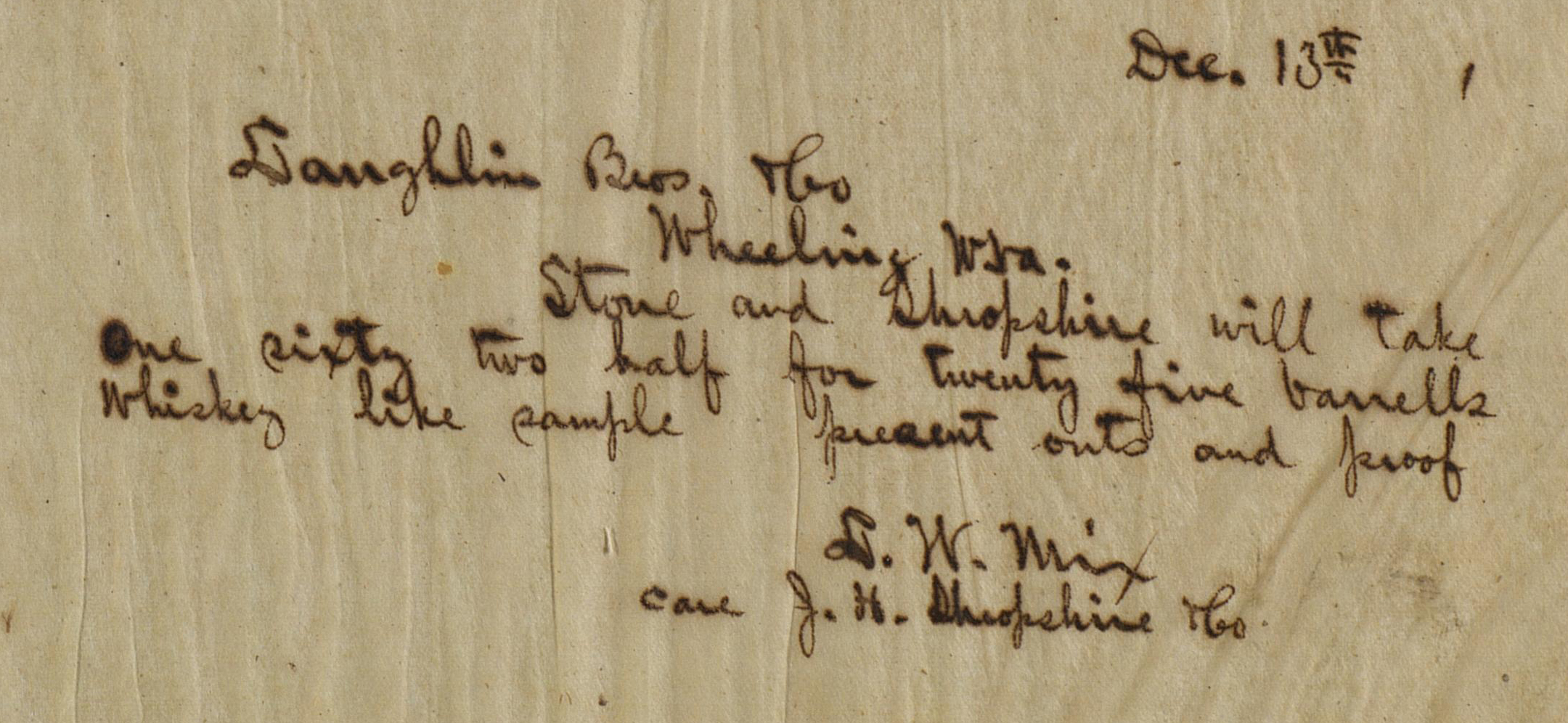
One of many sales records left behind by the Elkhorn Distillery. Sales volumes were generally small, not enough to keep the distillery solvent.
I have always understood the notion of holding whiskey ‘in bond,’ i.e. putting it into a warehouse for some period of time to age before excise taxes needed to be paid on it, as an implicitly good thing. Recently I came to understand that this boon could and did have some (possibly unintended) consequences, at least when bonding was first introduced.

In 2007 Buffalo Trace released this version of George. T. Stagg at an astonishing proof of 144.8. Changes to entry proof back in 1962 are what made the infamous 'Hazmat' release possible.
An innocuous looking document sent out by the TTB on the 27th of April 1962 would change the way American whiskey had been barreled since before Prohibition. Was the science it was based on any good or was the outcome predetermined?
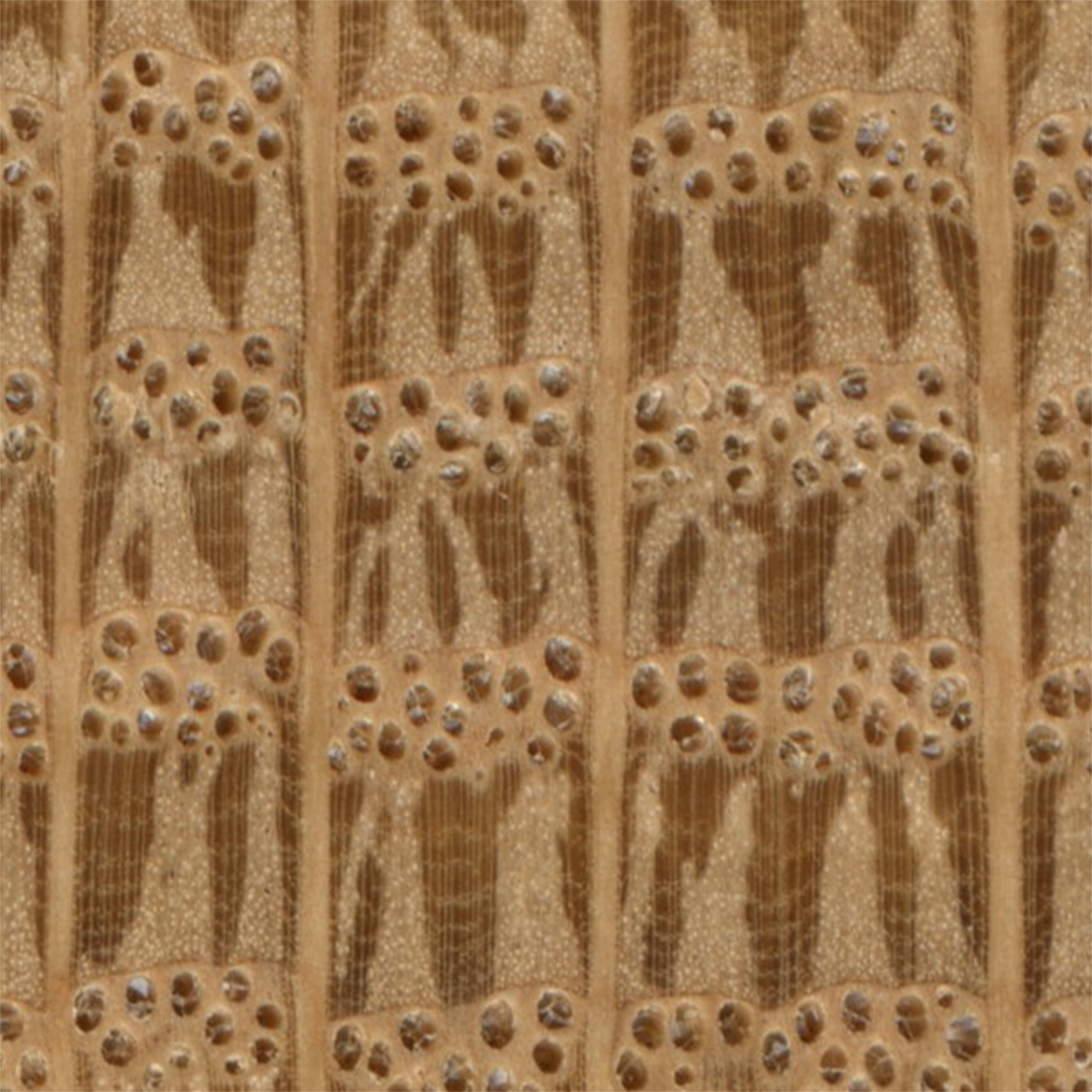
Cross section of American white oak showing tyloses and medullary rays
There's so much to admire and praise about the American white oak and the qualities it lends to Bourbon and rye whiskey. Here's a few of them.










